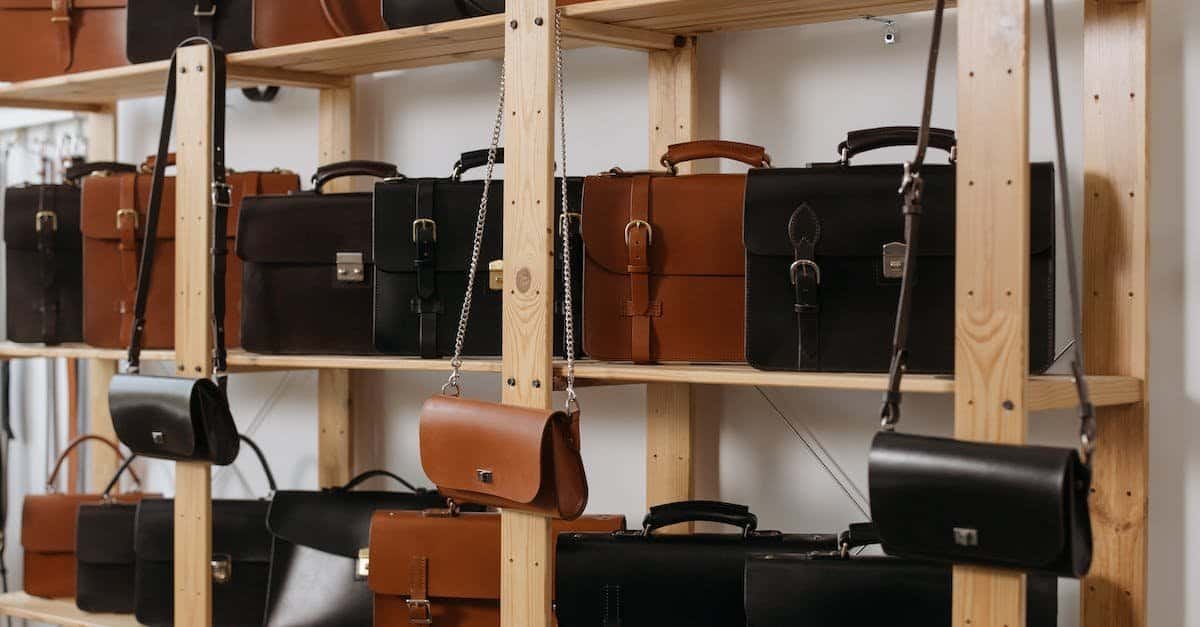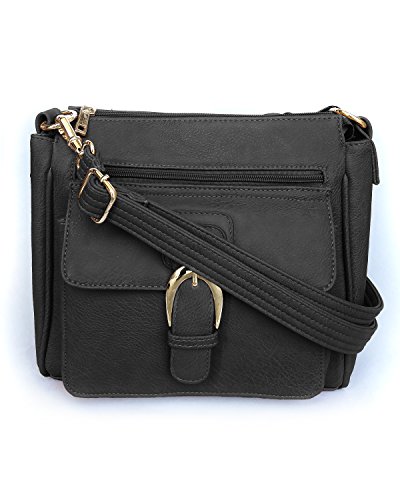Diving into the world of handbag design is thrilling, isn’t it? You’re about to turn your sketches into tangible, stylish accessories that could take the fashion world by storm. But before you get there, you’ve got to understand the nitty-gritty of designing for manufacturing.

You might be wondering where to start or how to ensure your designs are not only gorgeous but also production-friendly. Don’t worry; you’re in the right place. We’ll walk you through the essentials of creating handbags that are as practical to make as they are beautiful to behold.
Researching Handbag Designs
When diving into handbag design, market research is your first crucial step. You need to know what’s out there, what’s in demand, and what gaps you might fill. Start by analyzing current trends in fashion hubs like New York, Paris, and Milan. This gives you a clue about the styles that might dominate the upcoming seasons. Pay attention to:
- Color palettes
- Fabric choices
- Shapes and silhouettes
- Functional features
Browsing online marketplaces, fashion magazines, and attending trade shows also offer a plethora of ideas. Here, you’ll see firsthand what consumers are buying and what other designers are creating.
Understanding your target audience is paramount. Ask yourself, who is going to carry your handbags? Busy professionals, chic teens, or luxury seekers? Different demographics have distinct needs and preferences. For instance:
- Professionals might prefer spacious, durable bags.
- Teens often go for quirky designs and bold colors.
- Luxury clientele may focus on high-end materials and exclusivity.
Carry out surveys or focus groups to get direct feedback from potential customers. This data is invaluable as it guides the details of your design towards satisfying real needs.
Competitor analysis is another vital aspect. Look at successful handbag brands. What are they doing right? How can you differentiate your designs? Maybe it’s through innovative materials, unique features, or sustainable practices.
Don’t forget to check patent databases; the last thing you want is to infringe on someone else’s design. It’ll not only thwart your production plans but can also lead to legal battles.
Lastly, keep adapting your research as trends and consumer behaviors change. Stay ahead by being proactive rather than reactive. Your design process will be continuously informed, keeping your handbags fresh and relevant in a bustling market.
Understanding the Manufacturing Process
Before diving into the creation of your handbag, it’s crucial to grasp the ins and outs of the manufacturing process. This knowledge will greatly impact your design decisions and the practicality of producing your handbag at scale.
Begin by identifying the types of materials that best suit your design and audience. Leather, canvas, and synthetic fabrics are common, each with unique sewing and handling requirements. Remember, the choice of material affects not just aesthetics but also the manufacturing techniques used.
Next, you’ll want to understand the machinery involved. Are your design’s seams complex? If so, you’ll need machines capable of detailed work. Machines for cutting, sewing, and finishing all vary, and the ones you select will dictate the pace and volume of production.
Consider the following:
- Cutting: Precision is key. Will you use die cutting or laser cutting?
- Sewing: Understand the types of stitches your design requires. Some machines handle thick materials like leather better than others.
- Finishing: From zippers to buckles, the hardware must be attached securely and with consistency.
You should also think about the assembly line. A well-thought-out production line increases efficiency and ensures each handbag meets your quality standards. Map out each step from the cutting of materials to the final quality check.
Don’t forget to factor in the time needed for each manufacturing phase. Timelines can impact your launch dates and inventory levels.
By integrating manufacturing constraints into your design from the outset, you’ll save time and reduce the need for costly redesigns. With a clear understanding of the production process, your handbag design is more likely to be both beautiful and manufacturable.
Selecting Materials and Hardware
When you’re diving into handbag design, material selection is crucial. You’re not just looking for style; you’re seeking the perfect marriage of form and function. Your choices will determine the handbag’s feel, durability, and overall look. Opt for materials that mirror your brand’s ethos—whether that’s luxe, eco-friendly, or high-tech.
Textiles, leathers, and synthetics are your primary options. Here’s what you need to know:
- Textiles range from cotton canvas to high-end silks, offering versatility.
- Leathers provide a high-quality look but require more skill in handling.
- Synthetics are for durability and often have waterproof properties.
Your hardware selections—zippers, clasps, and buckles—add both functionality and aesthetic appeal. Quality hardware will ensure your handbag withstands the test of time and use. Yet, you have to think about weight. Heavy metals may add a premium feel but can make the handbag cumbersome.
« How to Replate Handbag Hardware: Expert Tips for a Shiny Finish
Where Can I Fix My Purse? Discover Reliable Repair Shops & Cost Tips »
Here are some pointers for choosing hardware:
- Go for metals that resist corrosion, like brass or nickel.
- Consider the ease of use—smooth zippers, secure clasps.
- Match the hardware finish to the design for a cohesive look.
When selecting materials and hardware, remember to factor in manufacturing capabilities and cost constraints. You might love a certain material, but if it’s rare or difficult to work with, it could skyrocket your production costs or extend your timelines. Always keep in line with what your manufacturer can reliably provide.
Test materials and hardware combinations to ensure they meet your standards. This is where your design begins to truly take shape, transitioning from concept to a tangible product ready for the assembly line. Don’t underestimate the impact of these elements—they are as important as the design itself.
Remember, each material and hardware choice either reinforces or weakens the integrity of your final product. Choose wisely to ensure that your handbag not only looks the part but plays it flawlessly in function and wearability.
Creating Technical Drawings and Patterns
When you’re ready to transform your handbag concept into a tangible item, it’s essential to start with detailed technical drawings and patterns. These will serve as the blueprint for your design, ensuring that every detail is precisely communicated to the manufacturers.
Technical drawings, also known as flats, are the backbone of your design. They must include multiple views of your handbag—the front, back, sides, bottom, and even an exploded view to reveal the interior. Each sketch needs to be clean, clear, and devoid of any artistic shading or styling. Your goal is to depict the handbag’s dimensions, stitching lines, hardware placement, and any unique design features. As a rule of thumb:
- Use a ruler or drawing software for even, crisp lines
- Indicate all functional elements like zippers, pockets, and straps
- Specify dimensions, including width, height, and depth
After you’ve nailed the technical drawings, move on to the pattern-making phase. This is where your design gets translated into individual pieces that will be cut from your chosen materials. To avoid any hiccups during production:
- Create life-size patterns to ensure accuracy in size and proportion
- Include seam allowances in your patterns
- Label each pattern piece with information such as material type and cut quantity
For both technical drawings and pattern-making, accuracy is key. Even a small mistake can lead to a prototype that doesn’t align with your vision, or worse, an entire production run that’s off the mark.
Manufacturers rely heavily on these tools, so it’s crucial you verify all details before sending them off. Consider having a seasoned designer or pattern-maker review your work to catch any potential issues. Remember, the more precise and thorough you are at this stage, the better the final handbag will look and function.
Prototyping and Testing
Once you’ve nailed down your technical drawings and patterns, the real fun begins: prototyping. Prototyping is your chance to transform those flat patterns into a three-dimensional reality. This step is crucial; it’s where you’ll see if your design translates well from paper to product.
You’ll work closely with a manufacturer or a sample maker at this stage. Make sure they’re skilled in making high-quality prototypes that truly reflect your design. This isn’t just about looks – functionality and construction are just as important. Your prototype will go through several iterations, so brace yourself for a bit of back-and-forth before you get it right.
- Start with basic materials to save on initial costs.
- Check the prototype’s size, shape, and functionality.
- Assess the ease of manufacturing.
Testing comes hand in hand with prototyping. Here, it’s not just about whether the bag holds up aesthetically. You need to ensure it’s robust enough to withstand daily use. Put your prototype through the paces:
- Perform stress tests on straps and zippers.
- Load it with weight to test durability.
- Use it daily to spot any design flaws.
Here are some vital factors you’ll want to keep an eye on during the testing phase:
| Factor | What to Check |
|---|---|
| Material resilience | For wear and tear over time |
| Colorfastness | To make sure hues stay true |
| Hardware integrity | For snaps, buckles, and zippers |
| Stitching strength | To avoid tearing and fraying edges |
As you refine your prototype, remember to update your patterns and technical drawings to reflect any changes. This ensures the final product matches your revised prototype perfectly. Keep in mind, tweaks after production starts can be costly and time-consuming, so it’s better to get everything right at this stage.
Don’t skip user feedback. Getting opinions from typical bag users or potential customers can uncover insights you might have missed. Listen for comments on comfort, practicality, and overall style. This input can be invaluable in making those final adjustments before you green-light mass production.
With a solid prototype and thorough testing under your belt, you’re one step closer to launching a handbag that’s not just beautiful but also practical and durable. Make sure every change, every test, takes you closer to the handbag you envisioned.
Conclusion
You’ve got all the tools you need to design a handbag that’s not only stylish but ready for manufacturing. Remember, transforming your vision into a tangible product is a journey — from meticulous prototyping to rigorous testing. Your attention to detail will pay off when you hold that first perfect sample in your hands. So go ahead, refine those patterns, gather feedback, and make the necessary tweaks. Your unique creation is just a few steps away from becoming someone’s go-to accessory!
Frequently Asked Questions
What is the significance of prototyping in handbag design?
Prototyping is critical in handbag design as it transforms flat patterns into three-dimensional forms, allowing designers to evaluate the design’s functionality and construction before mass production.
Why is testing essential in the handbag design process?
Testing ensures that the handbag is durable and can endure daily use. It involves checking material resilience, colorfastness, hardware durability, and stitching strength.
What factors should be considered during the handbag testing phase?
During testing, designers should assess material resilience, colorfastness, hardware integrity, stitching strength, and any other component that contributes to the handbag’s overall durability and quality.
How can designers use prototypes to refine handbag designs?
Designers use prototypes to refine handbag designs by updating patterns and technical drawings based on the prototype assessments and incorporating user feedback for final adjustments before starting mass production.








